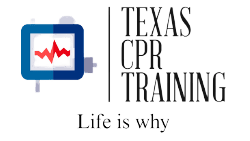
What Childcare Workers Need to Know
Unintentional injuries like cuts, burns, falls, drowning, traffic accidents, and poisonings are one of the leading causes of morbidity and mortality in children. According to the CDC, more than 12,000 children between the ages of 0-19 died from injuries while 9.2 million were treated in hospitals for non-fatal injuries. These deaths were certainly preventable if the people around the children had basic first-aid training skills.
This is why state law and the National Association for Education for Young Children make it compulsory for accredited childcare or daycare institutions to be certified in CPR and first-aid skills. But daycare workers are not the only ones, besides parents, who spend long periods of time caring for children.
The list of childcare workers also includes babysitters, nannies, foster parents, and teachers who are surrounded by children for multiple hours in one stretch of a time. It is crucial that they have these skills so they can perform emergency CPR and first-aid to save a young life from suffering severe implications.
While some of these skills might overlap in technicality when it comes to adult and pediatric first-aid, there are differences that require specific techniques. As a childcare provider, you should have the following basic first-aid skills:
Pediatric and Infant CPR
While cardiac arrest incidences in children and infants are uncommon, congenital cardiac disorders and other chronic illnesses might raise an emergency situation. CPR might also come in handy if you are working with children with special needs or in an aquatic environment. In case an emergency does arise in these conditions, immediate administration of the American Heart Association’s hands-only CPR might save the child’s life.
CPR for children and infants is slightly different in terms of the force you need to exert in the compressions. Texas CPR offers a training program that focuses on techniques focused on CPR for children and infants.
The Heimlich maneuver
Around young children, choking hazards do not only include food. Children constantly put things in their mouths including small objects like coins and toys that fit in their mouth. And since their airway is narrower than adults as their tongues are larger than their mouth, they choke much more easily. Performing the Heimlich maneuver can dislodge and force out any choking hazard, opening the airway and preventing a worse situation.
First Aid
Wounds
Children can sometimes play rough or take a tumble and get injuries that are more than just scrapes on the knee. First-aid training will teach you how to compress the wound, stop bleeding and keep the child stable until the ambulance arrives. For more non-serious injuries, it will teach you the right way to disinfect and bandage the wound to prevent further complications.
Burns
The same goes for burns. For smaller burns like the ones received by touching a hot pot, first-aid will teach you how to compress and treat it. For more serious burns, it will teach you how to keep them covered until the EMTs arrive.
Sprains and Broken Bones
Children can also easily sprain, fracture or break their bones in a fall or other accident. First-aid training will teach how to treat a simple sprain at home and how to keep the child stable until the ambulance arrives.
Other
First-aid training includes many other emergency skills that might prove helpful for childcare workers in emergencies including techniques to treat asthma, allergies, anaphylactic shock and more to stabilize the child while you wait for the ambulance.
Texas CPR Training offers classes on a weekly basis at their location or they will come to your location for a group of 6 or more students. Call 214-770-6872 to schedule a CPR and First Aid class.
